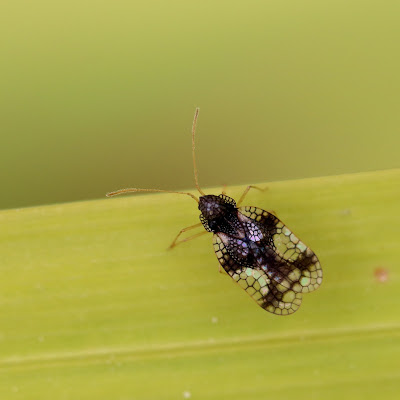One of our neighbours in the village recently found a bat
roosting on their window-frame.
Unfortunately, it was roosting on the inside of the frame. It’s not clear how it got there, but it’s
likely that it chased an insect into an open window and then couldn’t find its
way out. Calling the author of nature
notes didn’t resolve the situation as he only took photographs and made
sympathetic noises. Calling Karen
Hammond of the Sussex Bat Group was a much better idea as she had the appropriate
gloves and knows a lot more about bats.
She captured the bat and identified as a male brown long-eared bat
before releasing it away from the house.
 |
| Brown long-eared bat - Plecotus auritus |
Karen is the Volunteer Manager at Bodiam Castle and deals
with all bat-related issues there. She
is also a registered bat-carer. That
last fact is important as all bats are protected species and anybody who
handles them must have enough knowledge and an appropriate licence. (There is also the slight risk that bats can
carry a rabies-like virus – hence the gloves.) Karen also gives very
interesting talks at Bodiam Castle occasionally and I can highly recommend
attending one.
In spring bats make a roost where the females can give birth
and suckle their young until they are weaned.
Unsurprisingly these are called maternity roosts. Normally, for most bat species, the males are
not welcome in these roosts, but in the case of long-eared bats males are
tolerated there. Autumn is the time when
bats mate, something that must be accomplished before hibernation, so maybe
this lone long-eared bat had other things on its mind.
Bats are remarkable creatures, they are very agile as they
dart about catching insects on the wing.
We often see a couple of bats flying round the garden at dusk and it is
always a pleasure to watch them swooping about.
Apparently the brown long-eared bat is even more agile than most other
species and it can hover and take insects from vegetation.
The long ears (in this case, almost as long as its body) are
mainly to help with echolocation, the means by which the bat detects its prey. It sends out pulses of very high frequency
sound which echoes off the insects and tells the bat the direction and distance
of the insect. Possibly as a result of
its long ears, the long-eared bat can also hear the lower frequency sounds,
which allows it to hear insect movement on leaves and branches etc.
If you find a colony of bats roosting in your house rather
than just one confused individual, then it is no good calling out a bat expert
as it is illegal to disturb or destroy bat roosts in the UK, or to block access
to them. This is a protection covered by
both UK and international laws. The
protection is there because bats are generally in decline due to loss of
suitable roosting sites as well as the decline in their insect prey due to
intensive farming methods used since the end of the Second World War.
Personally, I’d be delighted to have bats roost in our house
and I am considering putting up a bat box to try and attract them. That may mean that we get fewer moths in the
garden, but as long as it’s in a good cause…
Away from bats, and more towards their prey, I found a tiny,
beautiful and very unusual insect in the garden recently – an Andromeda
Lacebug. These insects are associated with
the shrub Pieris japonica otherwise
known as Japanese Andromeda and were introduced into the UK from Asia via the
plant trade.
For more details about how the bug got its name see www.pettnats.blogspot.com.
 |
| Andromeda Lacebug - Stephanitis takeyai |